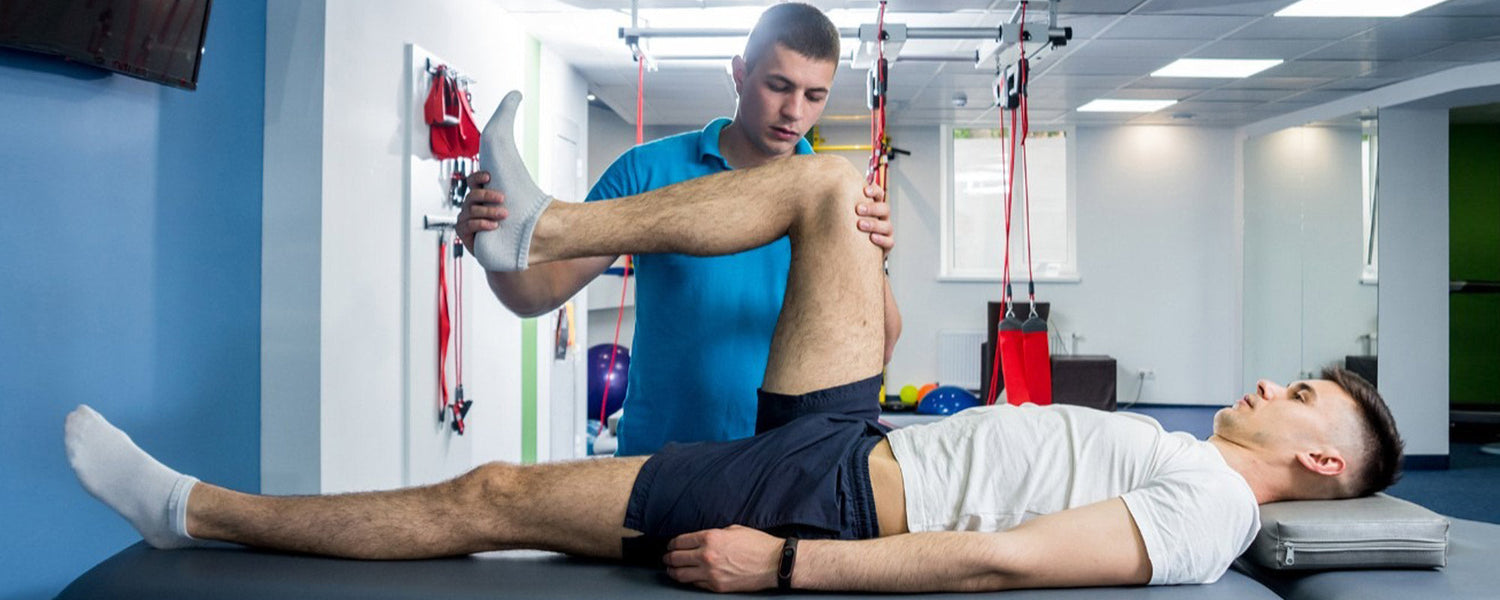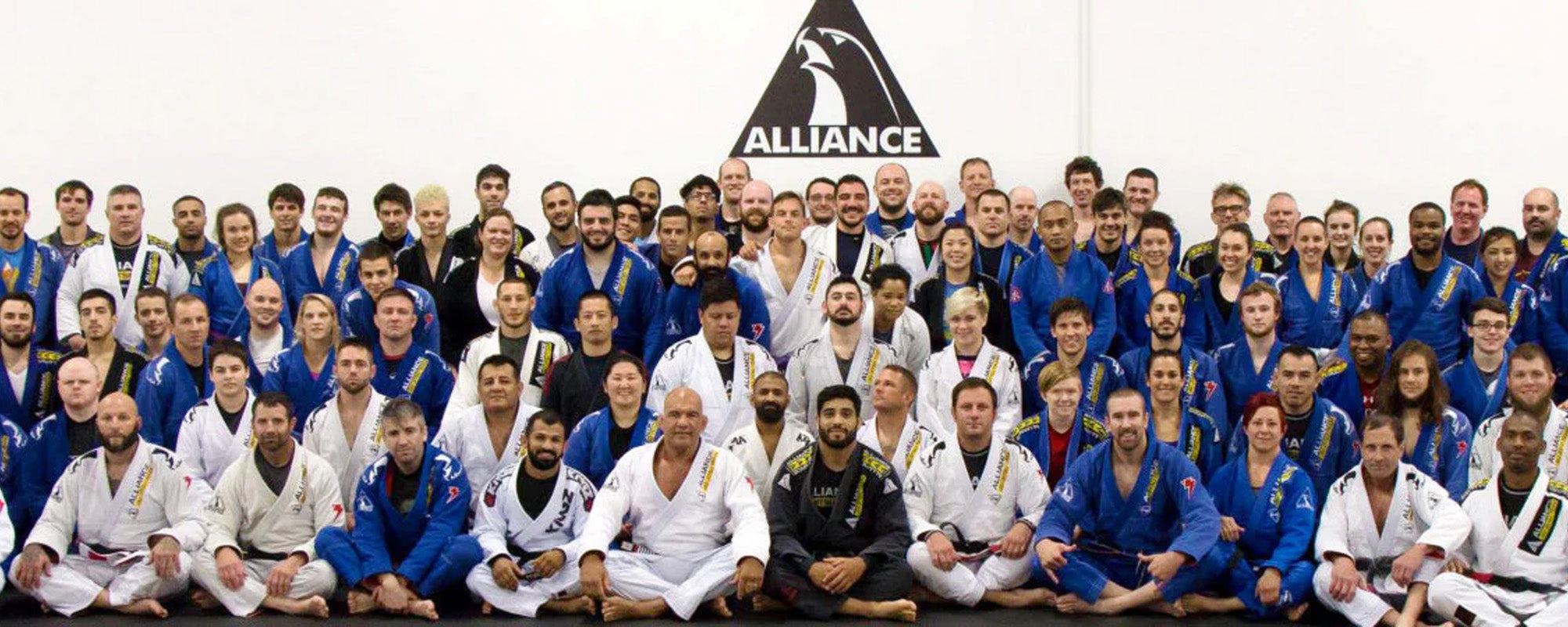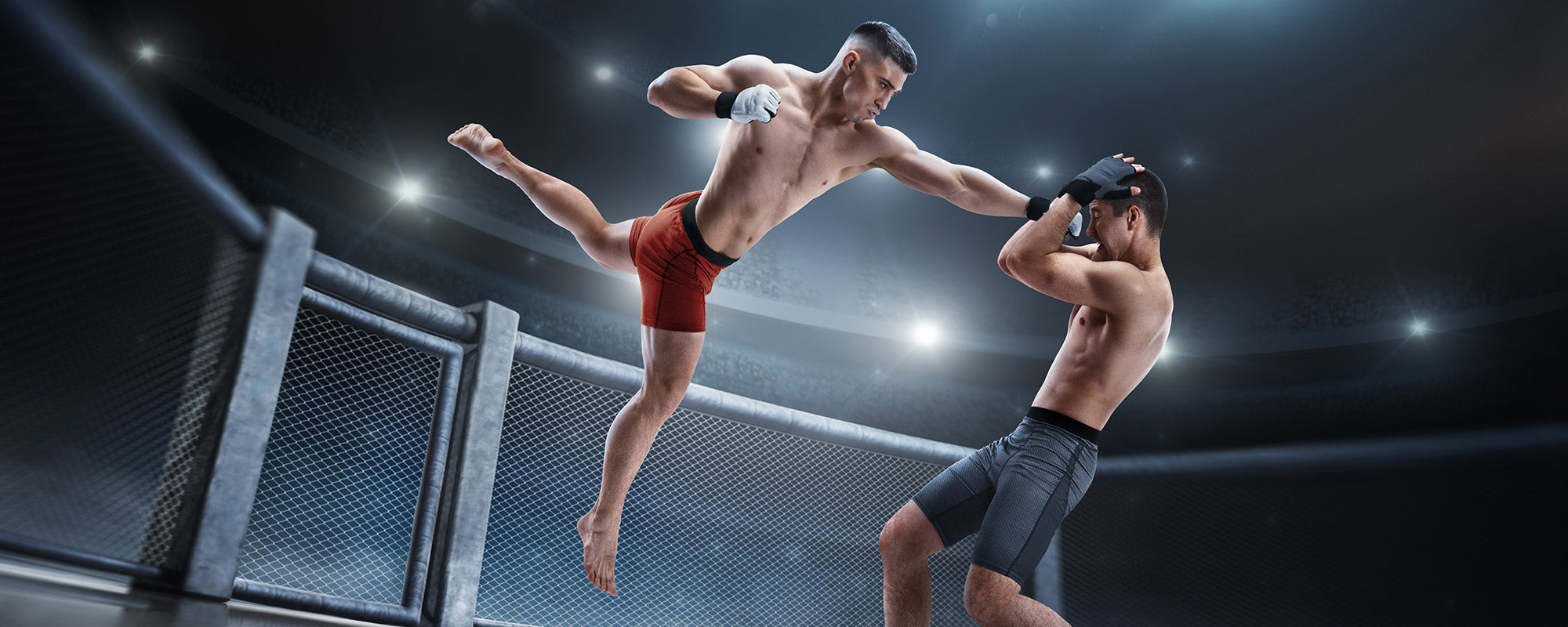Table of content

Jiu-Jitsu practitioners know well the importance of staying active and consistent with their training. However, an injury can quickly sideline even the most dedicated athlete. In particular, a knee injury can be especially frustrating as it limits mobility and puts a damper on one’s ability to roll. But fear not, there are still ways to maintain your Jiu-Jitsu skills and stay engaged with grappling while nursing a bad knee. In this article, we'll explore some tips and strategies for training Jiu-Jitsu with an injured knee, so you can keep your Jiu-Jitsu training alive even after an injured knee.
1. Knee Injuries in BJJ
The knee joint is an intricate and fragile structure that plays a vital role in daily activities and physical pursuits, especially in grappling martial arts like Jiu-Jitsu. Despite the significant strength and power of the muscles in the thighs and calves, the knee joint is surprisingly delicate and vulnerable to injury, particularly to the ligaments, tendons, and meniscus.
The menisci are crescent-shaped pieces of cartilage providing cushioning and reducing friction between the thighs and shin bones. The ligaments, on the other hand, are tough, elastic bands of tissues that help to keep the knee joints stable and secure. However, sudden or unnatural movements in Jiu-Jitsu, such as twisting or bending the knee, can cause these delicate structures to become stretched, twisted, or torn.
However, athletes can take proactive measures to avoid knee injuries by building strength and flexibility in the muscles that support the knee joint, as well as practicing proper technique and alignment during all movements. Furthermore, protective gear, such as knee braces or pads, can help reduce the risk of injury and provide additional support during Jiu-Jitsu training and tournaments.
2. Types of Knee Injuries in BJJ
As a BJJ practitioner, knee injuries are a risk that comes with grappling. As we know, knee joints are inflexible, with delicate structures that can be easily damaged. There are several types of knee injuries that can occur in BJJ, and it's essential to be aware of the signs and symptoms of knee injuries for timely treatment.
2.1. Meniscus Tears
Two types of the meniscus are present in your knee between the tibia and femur. The main function of the meniscus is to provide support and stability to knee joints. Meniscus tears usually happen in highly intense combat sports like Jiu-Jitsu during aggressive moves like leg lock and knee bar.
The meniscus acts as a shock absorber for the knee and can be torn when the knee is moved improperly or experiences quick, explosive movement. A torn meniscus causes knee discomfort, swelling, and weakness, and for proper treatment, it requires immediate medical attention.
2.2. Knee Sprain Injuries
Knee sprain is an injury of your knee’s ligaments. Ligaments give strength to joints and provide stability to the bones and muscles. However, there are the following ligaments that hold the knee together:
- Anterior Cruciate Ligament (ACL)
- Posterior Cruciate Ligament (PCL)
- Medial Collateral Ligament (MCL)
- Lateral Collateral Ligament (LCL)
Any wear or tear in these ligaments affect the overall health of your knee. Many BJJ practitioners ended their BJJ journey due to the severe effects of knee sprain injuries. Now let’s see the two major types of knee sprains that usually happen on the mat.
Anterior Cruciate Ligament (ACL) Sprain
The most common type of knee sprain in BJJ is the anterior cruciate ligament sprain. The ACL is responsible for preventing the knee from bending too far, and it can be torn during maneuvers like the kneebar. ACL injuries are serious and can cause knee instability, but this can be cured with surgery and proper medical attention.
Medial Collateral Ligaments (MCL)
Medial Collateral Ligaments are located on the side of the knee that link and stabilize the thigh and leg. These ligaments can be damaged during twisting, bending, and rotating movements of the knee, resulting in pain, swelling, and knee instability. Fortunately, many MCL injuries heal naturally over time with proper rest.
2.3. Knee Fractures
Knee fractures are rare in Brazilian Jiu-Jitsu, and they usually occur from direct knee punches or intense pressure on the knee. Practitioners with osteoporosis are more susceptible to knee fractures.
2.4. Dislocation of the Knee Joints
Knee joint dislocation is a severe knee injury that damages the blood vessels and nerves in your knee. In grappling sports like BJJ, this type of injury is relatively rare but requires quick surgery to prevent full knee damage and maintain the proper blood flow in the knee.
2.5. Knee Bursitis
Bursa acts as a shock absorber around the knee joints and protects them from any severe damage by reducing the friction between joints. However, any inflammation in the bursae affects the performance of BJJ athletes.
3. Causes of Knee Injuries in Jiu-Jitsu
Knee injuries are part of grappling sports due to the nature of the sport, which involves rolling, sparring, or bending of the knees during sudden movements. There are several causes of knee injuries in Jiu-Jitsu, including external forces, lack of hip flexibility, and overuse of the knee joint.
3.1. Role of External Forces in Knee Injuries
The most common cause of knee injury in Jiu-Jitsu is external forces from the opponent or training partner that twist or bend the knee joint. These forces can come particularly during moves such as heel hook, guard retention, leg lock submissions, and sudden rotational moves. These types of movements have detrimental effects on the ligaments, tendons, and cartilage of the knee joint, leading to pain and discomfort.
3.2. Lack of Hip Flexibility
The knee joint is not designed to be flexible, it’s naturally built to remain in its position while moving forward and backward. However, hip flexibility plays an important role in protecting your knee from injury. How does hip flexibility help BJJ practitioners to prevent knee injury? Strong hip muscles provide strength to the knee joints. When hip muscles lose their flexibility, high-impact, and leg movements can cause knee damage.
3.3. Overuse of the Knee Joint
One of the major causes of knee injuries is overuse of the knee joints in Jiu-Jitsu. Repeated stress on the knee joints increased knee inflammation and irritation. Some common types of overuse knee injuries include tendinosis, plica syndrome, bursitis, tendonitis, and patellofemoral pain syndrome.
4. Symptoms and Signs of Knee Injuries
Some common symptoms of the affected knee include:
| Type of Injury | Common Symptoms |
|---|---|
| ACL Sprain | Swelling, instability, pain, difficulty in walking |
| Meniscus Tear | Pain, swelling, weakness, locking of knee |
| MCL Sprain | Pain, swelling, tenderness, instability while moving |
| Knee Fracture | Pain, swelling, bruising, deformity, difficulty while moving |
| Knee Joint Dislocation | Pain, swelling, deformity, numbness, inability to move the knee |
Remember that if you experience any of these symptoms, it's important to seek medical attention as soon as possible to properly diagnose the root cause and treat your knee injury.
5. Tips For Returning to BJJ After an Injured Knee
When BJJ athletes sustain knee injuries, it can be challenging to continue on the mat training. Returning to BJJ after a knee injury can be a daunting task, but with the right approach, you can get back to the mat in a safe and efficient manner. However, there are ways for BJJ practitioners to safely train and maintain their skills while nursing a knee injury.
5.1. Seek Professional Medical Attention
The first step for fast recovery is to consult with a specialist or physical therapist to determine the severity of the injury and what exercises and movements should be avoided during training. This will help to avoid further damage to the knee and ensure that the healing process is not prolonged.
However, before returning to Jiu-Jitsu training, it is crucial to properly assess and treat your injury by a medical professional. Once you have fully healed and been cleared by orthopedics then you should consider returning to BJJ.
5.2. Gradually Modify Your Training
Once cleared by a medical professional, start slowly and gradually by focusing on movements and positions that don't cause pain or discomfort in the knee. This will help to rebuild your strength and flexibility, allowing you to gradually return to your normal training routine.
However, BJJ enthusiasts can modify their training practice to focus on techniques that do not place excessive stress on the knee joint. For example, they can work on upper-body grappling, submissions, takedowns, or drill techniques slowly and methodically to build muscle memory and improve form without straining the knee joints.
5.3. Warm Up and Stretch
Always warm up properly before training and perform stretching exercises to improve the flexibility of knee joints. This will help to prevent further injury and contribute to leveling up your overall performance on the mat.
5.4. Communicate with your Training Partners
Let your training partners know about your prior injury. This will ensure that you can safely train together without putting yourself at risk of further injury.
5.5. Focus on Injury Prevention
The most important step is to prevent future injuries by strengthening your body and improving your grappling technique. This includes maintaining a healthy diet and staying hydrated while practicing on the mat.
5.6. Exercise to Reduce Knee Injuries
Strength and conditioning exercises are incorporated to help Jiu-Jitsu athletes. Strength-building exercises help strengthen the muscles around the knee joint and improve overall stability.
Remember, returning to BJJ after a knee injury requires patience and a gradual approach. By following these tips, you can ensure a safe and successful return to the mat.
6. How to Prevent Knee Injuries in Jiu-Jitsu?
It may come as a surprise, but having tight hips can actually lead to knee pain! The hip joint is designed to rotate both externally and internally, and as any BJJ practitioner knows, hip rotation is essential in many techniques, such as guard retention, bridging, and shrimping. However, if your hips lack mobility, your body will compensate in other areas, including your lower back and knees, leading to potential injury.
So what can you do to prevent knee pain and injury? According to a study, strengthening your lower body muscles is key to protecting yourself from severe injuries. In fact, the study found that muscle strength is even more important than flexibility in preventing leg muscle injuries. So, the next time you hit the training gym, make sure to focus on strengthening those lower body muscles to keep your knees healthy and pain-free!
6.1. Exercise that Prevents You From Knee Injuries
Exercises that prevent the grapplers from knee injuries are
- Glute Bridge
- Push-Ups
- Hamstring Bridge
- Side Plank
- Romanian Deadlifts
- Nordic Hamstring Curls
- Single Leg Squat
6.2. Knee Braces
Knee braces also help BJJ practitioners in the prevention of knee injuries. This is an inexpensive method of preventing yourself on the mat from any severe knee injuries.
The main reason to wear knee braces are:
- Pain relief
- Structural support
For those who have experienced an ACL tear or any sort of knee injury, knee braces are advised since they can offer extra support during the healing process.
7. BJJ Submission that Causes Knee Injuries
BJJ submissions that affect the knee on the mat are:
- Knee Bar
- Leg Lock
- Heel Hook
- Half Guard
- Guard Retention
8. Iconic Figures of BJJ Who Faced Knee Injuries
8.1. Roberto Correa
In his teens, Roberto Correa had knee injuries that severely tore his ACL. However, Roberto's dedicated approach to the grappling techniques helped him to return back on the mat.
8.2. Marcus Almeida
In 2015, the legendary figure of Jiu-Jitsu, Marcus Almeida faced a severe knee injury on the mat that led to knee surgery. However, Almeida returned back after a year with more power and marked an incredible record in the world of BJJ.
9. FAQs
9.1. What is the Recovery Time For Knee Injury?
The recovery time from a knee injury can vary depending on the severity and type of injury. Minor injuries like sprains may only take a few weeks to heal, while more serious injuries like ligament tears or surgery can take several months or longer for a full recovery. However, It's important to seek proper medical care to know the severity of the injury.
9.2. How Do BJJ Practitioners Deal With Knee Injuries?
Knee injuries can be a common setback for Jiu-jitsu enthusiasts, but there are ways to deal with them. The RICE method, which involves Rest, Ice, Compression, and Elevation, helps to promote healing and reduce swelling.
In addition to this, BJJ lovers need to avoid activities that put too much pressure or strain on the knee, use compression bandages, and give their legs a break to allow for proper recovery.
9.3. Do Knee Injuries Heal Completely?
Yes, knee injuries can heal completely, but the extent of healing depends on the severity of the injury. Mild knee injuries like sprains and strains can heal on their own with proper rest and care.
However, when it comes to more severe injuries such as ligament or cartilage tears, they require surgical assistance and a longer recovery period.
10. Final Words
Injuries can be a frustrating setback for any Jiu-Jitsu practitioner, especially when it affects a vital joint like the knee. However, it doesn't mean that you have to give up your passion altogether after getting hurt on the mat.
Although the road to recovery seems too long and daunting, by taking the right preventative measures and allowing your body the necessary time to heal, you can return to the mat stronger and more resilient than ever.
Photo Credit: @sydney.edu.au













Leave a comment
This site is protected by hCaptcha and the hCaptcha Privacy Policy and Terms of Service apply.